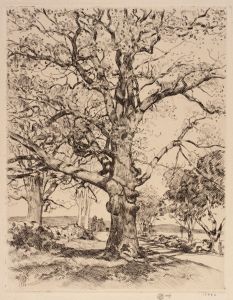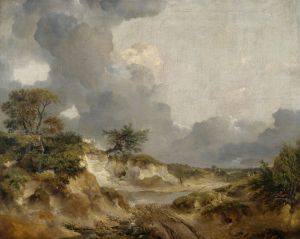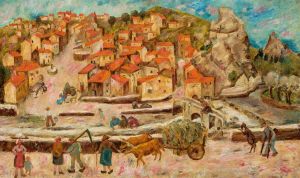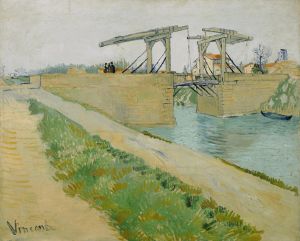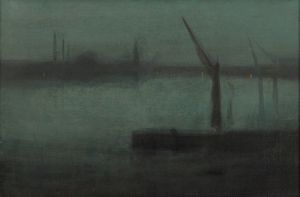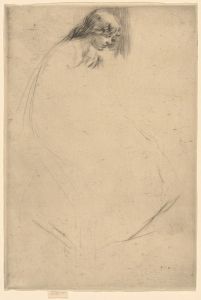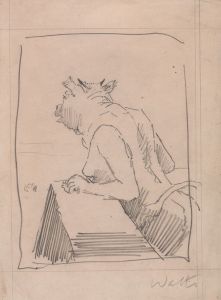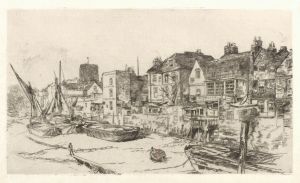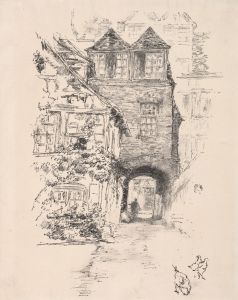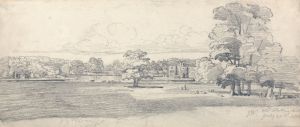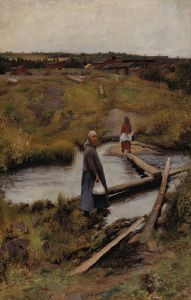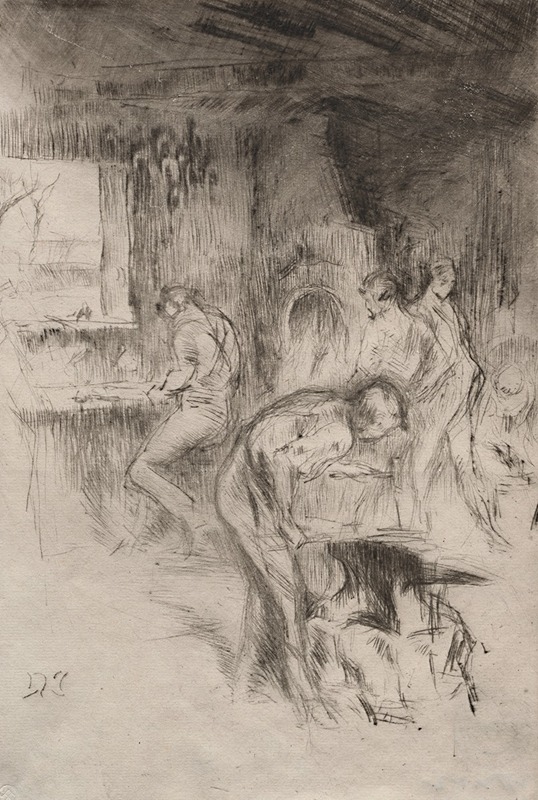
The Little Forge
A hand-painted replica of James Abbott McNeill Whistler’s masterpiece The Little Forge, meticulously crafted by professional artists to capture the true essence of the original. Each piece is created with museum-quality canvas and rare mineral pigments, carefully painted by experienced artists with delicate brushstrokes and rich, layered colors to perfectly recreate the texture of the original artwork. Unlike machine-printed reproductions, this hand-painted version brings the painting to life, infused with the artist’s emotions and skill in every stroke. Whether for personal collection or home decoration, it instantly elevates the artistic atmosphere of any space.
"The Little Forge" is an etching created by the American-born artist James Abbott McNeill Whistler, who is renowned for his contributions to the art world during the 19th century. Whistler, born on July 11, 1834, in Lowell, Massachusetts, is best known for his innovative approach to art, particularly in the realms of etching and painting. He spent much of his career in Europe, where he became a pivotal figure in the Aesthetic Movement, which emphasized the visual and sensual qualities of art and design over practical, moral, or narrative considerations.
"The Little Forge" is part of Whistler's extensive body of work in etching, a medium in which he excelled and through which he gained considerable acclaim. Whistler's etchings are celebrated for their delicate lines, atmospheric effects, and the artist's ability to capture the essence of a scene with remarkable economy and precision. His work in this medium often reflects his keen observation of everyday life and his interest in capturing the subtleties of light and shadow.
The etching depicts an interior scene of a forge, a place where metal is heated and shaped. Whistler's attention to detail is evident in the careful rendering of the forge's interior, the tools, and the figures at work. The composition is characterized by its intimate scale and the artist's ability to convey the texture and materiality of the objects within the space. Whistler's use of line is both expressive and controlled, allowing him to create a sense of depth and atmosphere within the confined space of the forge.
Whistler's etchings, including "The Little Forge," were part of a broader movement during the 19th century that saw a revival of interest in printmaking as an art form. This period witnessed a renewed appreciation for the technical skill and artistic expression that etching could offer. Whistler was among the artists who elevated the status of etching, demonstrating its potential to convey both narrative and aesthetic qualities.
Throughout his career, Whistler was known for his distinctive style and his commitment to the idea of "art for art's sake," a principle that emphasized the intrinsic value of art and its independence from moral or utilitarian functions. This philosophy is reflected in his approach to etching, where the focus is on the beauty of the composition and the skill of the execution rather than on any overt narrative or message.
"The Little Forge" exemplifies Whistler's mastery of the etching medium and his ability to capture the nuances of everyday life with elegance and subtlety. His work continues to be celebrated for its artistic innovation and its contribution to the development of modern art. Whistler's legacy as a pioneering artist in both etching and painting remains influential, and his works are held in high regard by art historians and collectors alike.






